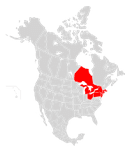Turn on the Screw,
There was an event back in 2011 where a bunch of plants froze due to not being winterized in Texas. That was gotten through with rolling blackouts. This event is a 200 year weather event and of a different magnitude. The freezing of the wells and pipelines was only exacerbated by the fact that there has been a shift to a greater portion of the generation using natural gas due to how cheap it is.
Here is FERC's report on the 2011 event.
I thought these parts were telling why the producers didn't want to winterize the wells.
"In Northern regions of the country this equipment is normally part of the original well design and installed as a matter of necessity along with all other production equipment. On wells that can cost
well in excess of
$1 million each, these costs are not as significant as when compared to a retrofit after the well has been placed on production. This investment needs to be weighed against the impact and ramifications of the reduction in gas flow, power reductions and outages during this time period. (Ref4, 19, 20)"
"Producers suggest that even improved winterization of the wells would not
prevent a significant portion of production declines, since other problems, such as icy roads that prohibit hauling off water (which, if not done, shuts down the well),are also commonly encountered. "

